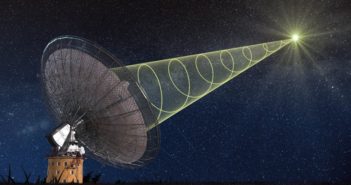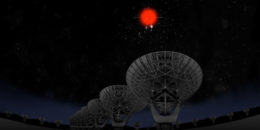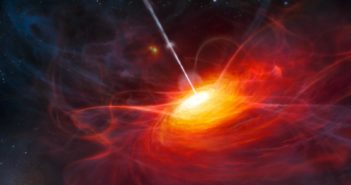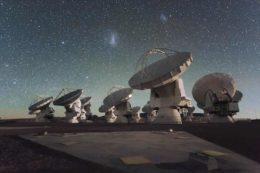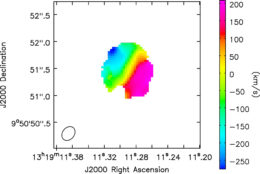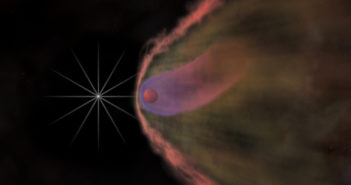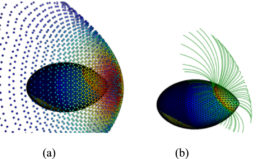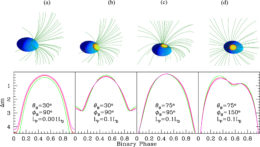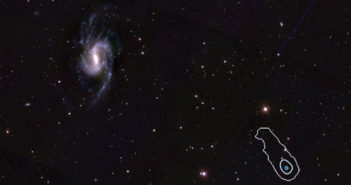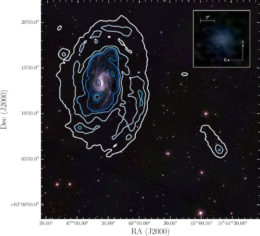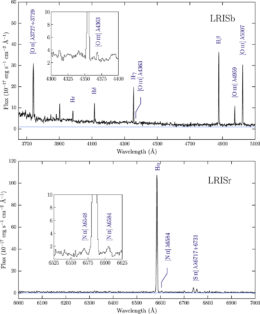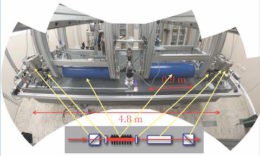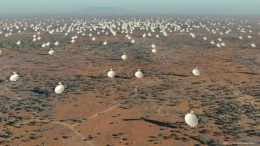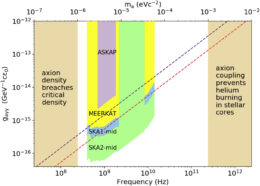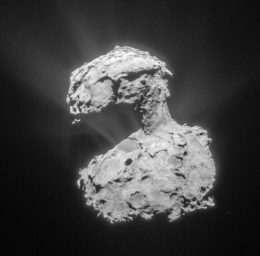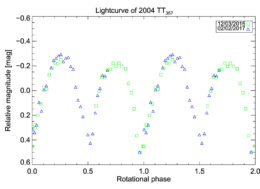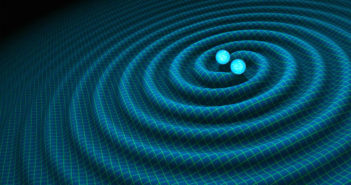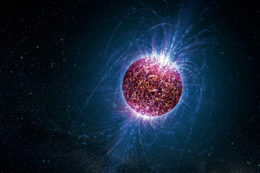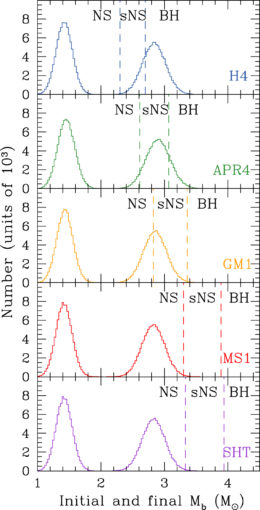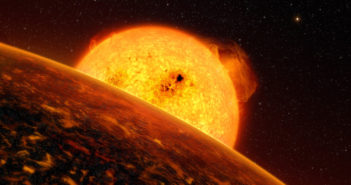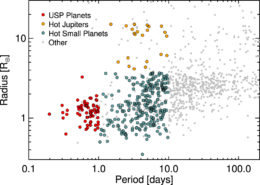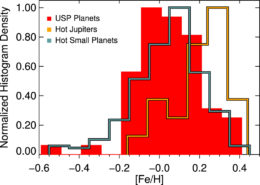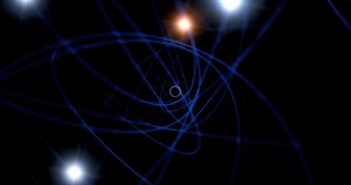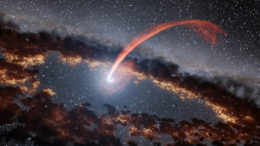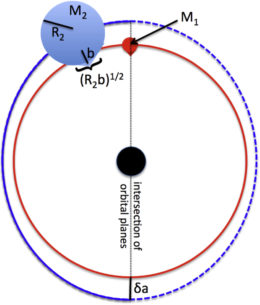
When a Star and a Binary Meet
What happens in the extreme environments of globular clusters when a star and a binary system meet? A team of scientists has new ideas about how these objects can deform, change their paths, spiral around each other, and merge.
Getting to Know Your Neighbors

Two simulations of the interaction of a white-dwarf–compact-object binary with a single incoming compact object (progressing from left to right). When tides are not included (bottom panel), the system interacts chaotically for a while before the single compact object is ejected and the binary system leaves on slightly modified orbit. When tides are included (top panel), the chaotic interactions eventually result in the tidal inspiral and merger of the binary (labeled in the top diagram and shown in detail in the inset). [Samsing et al. 2017]
One common type of meeting is that of a single star with a binary star system. Studies of such interactions often treat all three bodies like point sources, examining outcomes like:
- All three objects are mutually unbound by the interaction, resulting in three single objects.
- A flyby encounter occurs, in which the binary survives the encounter but its orbit becomes modified by the third star.
- An exchange occurs, in which the single star swaps spots with one of the binary stars and ejects it from the system.
Complexities of Extended Objects
But what if you treat the bodies not like point sources, but like extended objects with actual radii (as is true in real life)? Then there are additional complexities, such as collisions when the stars’ radii overlap, general relativistic effects when the stars pass very near one another, and tidal oscillations as gravitational forces stretch the stars out during a close passage and then release afterward.
In a recently published study led by Johan Samsing (an Einstein Fellow at Princeton University), the authors explore how these complexities change the behavior of binary-single interactions in the centers of dense star clusters.
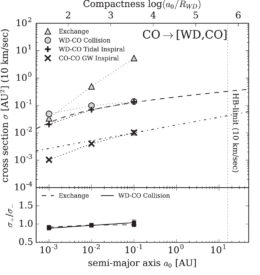
One example — again in the case of a white-dwarf–compact-object binary interacting with a single compact object — of the cross sections for different types of interactions. Exchanges (triangles) are generally most common, and direct collisions (circles) occur frequently, but tidal inspirals (pluses) can occur with similar frequency in such systems. Inspirals due to energy loss to gravitational waves (crosses) can occur as well. [Samsing et al. 2017]
How Tides Change Things
Using numerical simulations with an N-body code, and following up with analytic arguments, Samsing and collaborators show that the biggest change when they include effects such as tides is a new outcome that sometimes results from the chaotic evolution of the triple interaction: tidal inspirals.
Tidal inspirals occur when a close passage creates tidal oscillations in a star, draining energy from the binary orbit. Under the right conditions, the loss of energy will lead to the stars’ inspiral, eventually resulting in a merger. This new channel for mergers — similar to mergers due to energy lost to gravitational waves — can occur even more frequently than collisions in some systems.
Samsing and collaborators demonstrate that tidal inspirals occur more commonly for widely separated binaries and small-radius objects. Highly eccentric white-dwarf–neutron-star mergers, for example, can be dominated by tidal inspirals.
The authors point out that this interesting population of eccentric compact binaries likely results in unique electromagnetic and gravitational-wave signatures — which suggests that further studies of these systems are important for better understanding what we can expect to observe when stars encounter each other in dense stellar systems.
Citation
Johan Samsing et al 2017 ApJ 846 36. doi:10.3847/1538-4357/aa7e32

